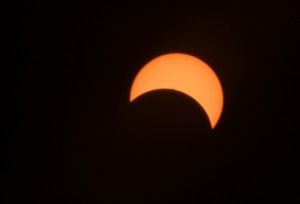More than 80% of the land in Nevada is managed by the federal government. And “managed” can be a loose term.
That’s because the level of public stewardship for the land can depend on what type of land it is. Many Las Vegans are familiar with the cleanliness and amenities of Red Rock Canyon National Conservation Area, Lake Mead National Recreation Area, Mount Charleston Wilderness and Avi Kwa Ame—Nevada’s newest national monument.
A group of Southern Nevada residents are pushing for the designation of an East Las Vegas National Monument that would include Sunrise Mountain, Frenchman Mountain and Rainbow Gardens. The area is currently designated as an Area of Critical Environmental Concern (ACEC).
“There’s a lot of illegal dumping that happens … a lot of trash in the area, especially around Lake Mead Boulevard’s edges, and some around Rainbow Gardens,” says resident and advocate Bertha Gutierrez. “So there’s a lot of need for better management and monitoring that the current designation as an ACEC does not address, because of limitations in terms of funding and the kind of work that the agency can do with that.”
Get Outdoors Nevada, a UNLV professors group and a citizens group join Gutierrez, a program director for the nonprofit Conservation Lands Foundation, in the effort to designate more than 32,000 acres east of Las Vegas as a national monument. The push has been underway since 2021, when state and county lawmakers passed resolutions to protect the area with a new federal designation, be it a national conservation area like Red Rock Canyon, a national recreation area like Lake Mead or a national monument.
“It’s an area worth protecting and enhancing and really restoring for the Las Vegas community,” Gutierrez says.
Not only is the area a prime location for potential recreation for East Las Vegas families, she says, it’s also home to a rare flower and a geologic phenomenon that mirrors what can be seen at the bottom of the Grand Canyon.
“The [bear-paw] poppy only grows around the gypsum mine sites,” she explains, adding that geologists and UNLV scholars value the area for “the Great Unconformity,” or a formation of rock that is covered by younger layers of rock and sediment.
“That’s an outdoor classroom, right there!” Gutierrez says, excited at the possibilities for local residents and schools to use the lands for educational purposes. “There are so many opportunities for the community to guide this process.”
In addition to large-scale dumping, Gutierrez says the area is plagued by other issues like people holding parties in the desert and leaving trash, or even abandoning pets there. But there’s potential for it to be an accessible park.
Looking to Avi Kwa Ame
“What we are really taking from the Avi Kwa Ame example is the power of really engaging tribal communities, doing things together and following the lead of tribal communities,” Gutierrez says, referring to a widely supported movement that led to the designation of Nevada’s fourth national monument. President Joe Biden on March 21 designated 500,000 acres of land surrounding Searchlight south of Las Vegas as the new Avi Kwa Ame National Monument.
The Fort Mojave Indian Tribe had been advocating for improved management and protection of the land, which it believes to be an ancestral “spiritual birthplace.” Unwelcome off-roading, shooting, littering and illegal dumping plagued the area, tribal members said.
There were also concerns about protecting the land from solar development, and a conflict of those arose during the campaigning process and public meetings with the Bureau of Land Management. Ultimately, a 9,200-acre renewable wind project, proposed within the current Avi Kwa Ame boundaries, did not go through.
Advocates attribute much of their success to the broad coalition of environmentalists, hikers, off-roaders, hunters, businesses, local governments and federal delegates who supported the national monument designation. Opposition came, most notably, from Gov. Joe Lombardo, who called the designation a “historic mistake.”
“This kind of ‘Washington knows best’ policy might win plaudits from unaccountable special interests, but it’s going to cost our state jobs and economic opportunity, all while making land more expensive and more difficult to develop for affordable housing and critical infrastructure projects,” Lombardo said in a statement after Biden announced the designation.
Lombardo’s office didn’t respond to the Weekly’s request for comment about whether he’d support the creation of a national monument east of Las Vegas.
To ensure their success, the East Las Vegas National Monument advocates are in the process of building a coalition of stakeholders. “We are at that level of building partnerships, because we do want this to be a community-led effort,” Gutierrez says, adding that the name of the proposed monument could change, depending on input received.
Ice Age Fossils State Park
When it comes to state-owned land, a recent donation from a trust fund will enhance features and accessibility of a little-known state park in the north part of the Valley. On April 12, Nevada State Parks officials announced a new state-of-the-art visitor center made possible by a $3.5 million donation from Helmsley Charitable Trust. In recent years, the foundation has invested millions in health care initiatives throughout the state, including rural health infrastructure. The grant for the visitor center “[fits] into our healthcare portfolio,” Trustee Walter Panzirer tells the Weekly.
“We believe getting people outside is good for their physical health and for their mental health,” Panzirer says. “[If] you look at how Las Vegas is growing, it’s important to have the park open; to have this park protected, because there’s so much history out there; and also to give people access to their lands, to have recreation out here.”
Adjacent to Tule Springs Fossil Beds National Monument, the 315-acre Ice Age Fossils State Park initially was announced in 2017 by then-Governor Brian Sandoval. The visitor center and a developed trail system, which are anticipated to open in fall, will offer interpretive exhibits educating about the biologic and geologic histories of the area, which has fossils of mammoths and other large mammals dating back 2.4 million years.
One of three trails will guide visitors through the history of the Big Dig, a large-scale, multidisciplinary science experiment that took place in 1962.
“It’s one of the largest scientific expeditions ever. … They bulldozed excavation trenches, almost two miles,” says park supervisor Garrett Fehner. “People forgot about the site for a while. It’s kind of moving toward people rediscovering what is actually out here, and people are starting to fully appreciate the fossils.”
Administrator Bob Mergell, who oversees Nevada State Parks, says Ice Age Fossils, like any other place, has its own story to tell.
“Most people just see a big, empty lot, [or] a future housing development. … A lot of people have just seen a place to dump their refrigerator or a place to go shooting,” Mergell says. “When you get out there with somebody who knows what to point out, you see that it isn’t just a vacant, barren desert. There’s a lot of really cool things that you wouldn’t expect to find there.”
Click HERE to subscribe for free to the Weekly Fix, the digital edition of Las Vegas Weekly! Stay up to date with the latest on Las Vegas concerts, shows, restaurants, bars and more, sent directly to your inbox!




